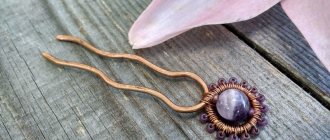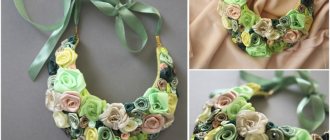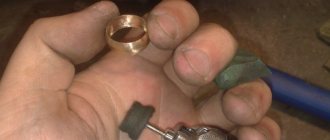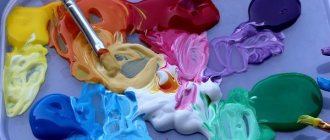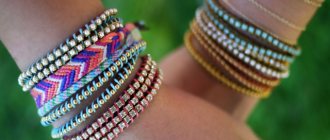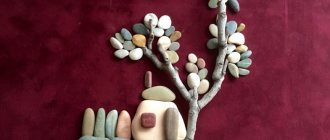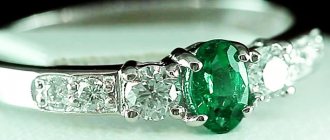Metal allows you to realize many creative ideas. But working with it requires special skills, abilities and devices. However, the result is durable, original and unique.
Thanks to the malleability of the material and the talent of the master, do-it-yourself metal crafts worthy of admiration appear. They become the pride of a personal plot, cottage or home interior. Let's look at a few examples and working methods:
Sheet metal owl
To work with a thin sheet of metal, strong and sharp scissors are sufficient. Thanks to them, beautiful metal crafts are created in the form of animal figures, various patterns or abstractions. What is needed to make a metal owl:
- Thin sheet and narrow strips of metal;
- Substrate in the form of a wooden rectangular board with a thickness of no more than 0.5 mm;
- A set of various nails and elements for fastening;
- A spoon with a rounded end. It will allow you to form the necessary image of an owl by squeezing out feathers and other parts of the body;
- Sharp scissors.
Stages of work completion
They are not particularly difficult, but will require patience and attention. Detailed review:
- A full sketch is created;
- Thanks to a permanent marker, the diagram is transferred to the metal from the inside;
- Use sharp scissors to cut out the necessary elements;
- To squeeze out a pattern on the inside of the metal or highlight grooves, use a spoon with a rounded end;
- The buttons create the owl's eyes. Can be replaced with metal elements with a similar shape. At the author's discretion, such details are used as additional decoration for the bird;
- When all the parts are ready, the owl is assembled;
- To secure parts of metal crafts, nails or other fasteners are used.
Technology of coating objects with gold leaf
Gold coating of plastic, wood, metal and other materials is carried out using the thinnest sheets - the thickness of gold leaf (cladding) is 0.13-0.67 microns. In the old days, gold leaf was made by hand, today special equipment is used. Depending on the thickness of the sheet, free and transfer (on silk paper) gold leaf is distinguished. It is very difficult to work with the first one - the slightest breath interferes with the process. The finished material is stored in little books - each of the 60 sheets is covered with paper. Applying gold leaf is a painstaking process. The technology is based on the ability of gold rolled out from a sheet to be attracted to the surface at the molecular level. There are two techniques for gilding with gold leaf: glue (for polyment) and oil (for Mordan varnish). In the first case, a glossy surface is obtained, and in the second, a matte surface. The adhesive method is used when carrying out interior work.
How to use welding to create metal crafts?
Welding allows you to quickly and reliably connect metal parts, but this method requires compliance with safety precautions and developed skills in working with the appropriate equipment. Electric welding is used for this, since it is portable and accessible compared to its gas counterpart.
To create metal crafts by welding, a transformer, welding machine or inverter is used. The choice is related to accessibility, the nature of the work, and the preference of the author of the metal product.
Pencil gilding
Another “home” method is to use a galvanic pencil in which the tip serves as the anode and the surface of the product as the cathode. The principle of deposition is similar to the electroplating method, but the equipment used eliminates the use of a solution bath.
Noble metal not only decorates products, but also performs protective functions. The gilding process should be entrusted to professionals - lack of experience and the use of dangerous components often leads to undesirable consequences.
What metal crafts are created using welding?
In fact, everything, right down to artistic work in the form of sculptures of people or animals. But most often welding creates:
- Installation of all kinds of structures;
- Repair work is being carried out;
- Garden supplies are made.
Photos of available examples are offered on our website dnevnikmastera.ru. Almost all illustrations are accompanied by detailed master classes on making metal crafts using welding and other methods.
How to work with a welding machine?
This requires experience, practice and strict adherence to safety regulations. First, the newly minted master practices on a damaged piece of metal. This is necessary to acquire knowledge of igniting and maintaining an arc based on maintaining a constant gap between the electrode and the workpiece.
After this, the technique of making a weld is studied. If it turns out smooth without difficulty, then you need to learn how to correctly regulate the current strength to work with different thicknesses of the workpiece.
At its core, welding in the process of creating metal crafts is used to connect two parts. This occurs by melting the surface of the future joint. A solid metal structure is formed through the use of an electrode.
However, this is not an easy task and requires a lot of practice and experience, since it is necessary to ensure that the top layer of the workpiece melts, otherwise holes may form.
After acquiring basic skills in creating metal crafts by welding, you can move on to doing simple work to gain experience. For this, it is more profitable to use an inverter, since it has increased mobility and consumes less electricity.
Electroplating
The galvanic gilding process is the most commonly used process today. It is applicable when processing conductive products is carried out. The electrolyte becomes a solution of gold salts. A part is immersed in it - when a current passes, positively charged particles released from metal salts settle on the surface of the product and form an even layer of gold.
An even better result can be obtained using the selective method of electrochemical gilding. The use of this technique makes it possible to increase the rate of metal deposition on the product tens of times. The wear resistance and hardness of gold coating increases by more than 3 times. Gold penetration occurs at the molecular level. Electroplating methods are used in gilding souvenirs, jewelry, dentures, etc.
What can you make from an old bicycle for your garden?
Old bicycles were found on the balcony and attic, but it was a pity to throw them away. Then you can give them a new life by transforming them into something useful for the garden. For this purpose, it is not necessary that the vehicles be in a suitable condition.
You can use the remaining parts to create an unusual flower bed. It is formed by attaching a flowerpot with flowers to an accessible metal structure left over from a two-wheeled product.
Stand for cucumbers and other cultivated plants
Wheels from several bicycles are used for this. If rust is found on them, it is cleaned with sandpaper. The bicycle is covered with 2-3 layers of metal paint.
Some skip this stage to create the effect of the presence of antiquity. What is needed to create this metal craft for the garden:
- Bicycle wheels;
- Wooden block;
- Heavy and small stones to secure the structure;
- Comfortable shovel;
- Antiseptic;
- Stretch film;
- Wire;
- Strong hammer;
- Scissors.
Step-by-step instruction:
- A shovel is used to dig a hole for installing a wooden block at one of the ends. To protect against rotting, it is coated with an antiseptic in several layers. After drying, the edge chosen for immersion in the ground is wrapped in several layers of stretch film. This will provide insulation from moisture.
- Help will be required for installation. One holds the post, the other fills it with heavy and small stones. A strong hammer is used for compaction.
- If possible, the structure is filled with cement. If it is not there, then a mound of dense soil is created. It is carefully compacted.
- If cement was used, you must wait until it is completely dry. Then the wheels are connected to the post using wire.
Cucumbers will be able to curl around the wheels and be attached to a support to receive maximum sunlight. But this design will also be useful for other plants that can grow vertically and twine around objects: grapes, beans. However, the height of the wheels should be comfortable for unhindered harvesting.
If you liked exploring the possibilities of metal crafts, check out other materials on the site. There is still a lot of interesting things here.
Jewelry and costume jewelry of the USSR
Vintage jewelry from the USSR is much more monotonous than those made in the West. This is natural: the USSR developed mainly heavy industry and defense, and the production of fashionable clothing and jewelry was given vanishingly little attention. All the best in this area was exported, and only crumbs were left for our compatriots.
In the boxes of fashionistas of the Soviet period one could find gold rings and earrings with large transparent stones of different colors (usually synthetic), as well as long chains with pendants that were not very diverse. Such jewelry is not of particular interest, but in combination with a properly selected bow, it will sparkle.
Of greatest interest is high-quality Czech and German costume jewelry, which was in incredible short supply. A few lucky people brought it from abroad and sold it at exorbitant prices. Beads made of artificial pearls and brooches with Czech glass and semiprecious stones were especially held in high esteem.
Among the jewelry produced in the Soviet Union, items made from Baltic amber are of particular interest (remember that the Baltic countries were part of the USSR, so there was no shortage of good amber).
Jewelry with enamel, that is, painting on enamel, also looks very attractive. As a rule, earrings, pendants and rings with enamel were made of cupronickel and silver, so that to this day they retain a fairly presentable appearance.
The classic theme of enamel is all kinds of floral motifs. But we are talking about the USSR, right? So you can find truly unique jewelry made using this technique, for example, brooches with portraits of Yuri Gagarin and other prominent figures of that era.
The appropriateness of such decorations in creating modern outfits can be debated long and hard. But you need to understand that these are the rarest antique rarities that are very expensive. And they were created exclusively by hand by hereditary enamellers, who passed on their art from generation to generation.
The most popular men's jewelry during Soviet times were cufflinks and tie clips. Representatives of the stronger sex practically did not wear chains, rings and bracelets back then, but every Soviet person had a wristwatch.
